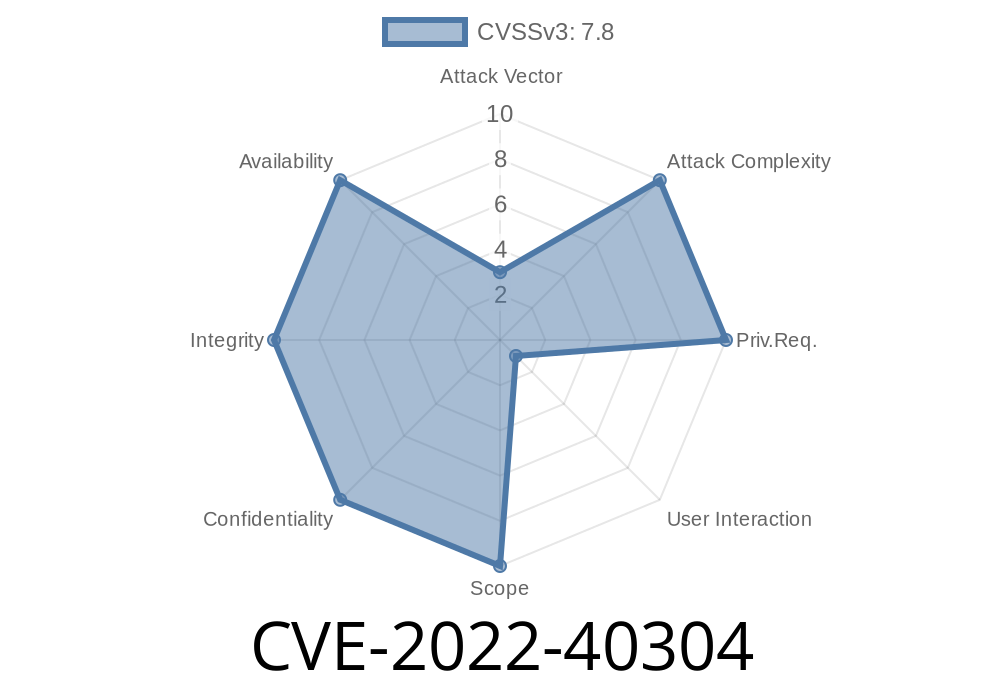Summary: An issue was discovered in libxml2 before 2.10.3, where certain invalid XML entity definitions can corrupt a hash table key, leading to logic errors and even provoking a double-free scenario. This post aims to dissect the vulnerability and provide a vivid understanding of its origin, details, and scope.
Introduction
libxml2 is a highly-used XML parser library implemented in C, and it provides a wide range of APIs for parsing and manipulating XML documents. This vulnerability, tagged as CVE-2022-40304, is present in versions of libxml2 before 2.10.3, and specifically, it affects the handling of XML entity definitions. Consequently, when processing malicious XML content, this issue can lead to memory corruption, resulting in a double-free condition, which hackers can exploit for various purposes, including denial of service (DoS) attacks, information leakage, or potential privilege escalation.
Code Snippet Demonstration
The code snippet provided below demonstrates the improper handling of XML entity definitions in affected libxml2 versions and what makes the memory corruption occur.
<!DOCTYPE root[
<!ENTITY recursive1 "<!ENTITY recursive2 &recursive1;">
<!ENTITY recursive2 "&recursive1;">
]>
<root>&recursive1;</root>
In the above XML content, the entity definitions "recursive1" and "recursive2" reference each other, ultimately leading to corrupting a hash table key in libxml2 library, and causing a memory corruption issue.
Further delve into the codebase
The vulnerable function within the libxml2 code base is "xmlParseAttValueComplex()" located in parser.c. The problem arises when the hash table key is corrupted due to the improper handling of circular entity definitions mentioned earlier. This corruption eventually leads to memory management problems, specifically a double-free condition when two different pointers attempt to release the same memory block.
To further examine this vulnerability, the following resources are insightful
1. Official libxml2 Repository: https://gitlab.gnome.org/GNOME/libxml2
2. CVE Details: https://nvd.nist.gov/vuln/detail/CVE-2022-40304
3. Commit with Fix: https://gitlab.gnome.org/GNOME/libxml2/-/commit/5576b6d89666e7f8af186b91cb8b5695c5e50f30
Exploit Details
The vulnerability can be triggered by an attacker by crafting a specially designed XML document containing a recursive entity definition, as demonstrated in the earlier code snippet. Once an affected application processes this XML content using the vulnerable libxml2 library, memory corruption occurs, potentially leading to a variety of security issues, including:
Information leakage: Sensitive data in memory may become exposed.
3. Privilege escalation: An attacker could exploit this vulnerability to execute malicious code with escalated privileges.
The extent of the damage depends on the affected application's implementation and how it utilizes the libxml2 library. While it may not be easy for an attacker to create a working exploit, the potential for harm cannot be underestimated.
Conclusion
CVE-2022-40304 is a severe vulnerability stemming from improper handling of XML entity definitions in libxml2 versions before 2.10.3. The issue can lead to memory corruption, specifically a double-free condition, presenting attackers with opportunities for denial of service, information leakage, and potential privilege escalation. It is crucial for developers using the libxml2 library to update to the latest version and ensure their applications are no longer susceptible to exploitation.
Timeline
Published on: 11/23/2022 18:15:00 UTC
Last modified on: 08/08/2023 14:22:00 UTC
